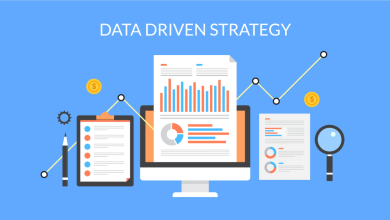
The Urgent Reality of Climate Financial Risk
When Hurricane Ian struck Florida in 2022, it caused up to $65 billion in insured losses, ranking among the costliest hurricanes on record. But Ian wasn’t an anomaly—it was part of a worsening pattern.
In 2023, the U.S. experienced a record 28 billion-dollar weather and climate disasters, up from the previous high of 22 in 2020. This surge in climate-linked losses highlights an urgent truth: climate risk is no longer distant or abstract—it’s a present, material threat requiring sophisticated, cross-asset analysis to inform investment decisions.
This shift from theoretical to tangible is precisely what experts like Dr. Yoshua Bengio, Turing Award winner and one of the “Godfathers of AI,” have articulated: “Citizens in the past have been hearing about climate change coming from scientists, reports, and graphs, and there is a cognitive aspect, which is, something doesn’t scare us so much if it’s not right in front of our eyes.” But with climate impacts now making front-page news regularly, the financial implications are becoming impossible to ignore.
Investors are struggling with traditional climate risk assessment methods in today’s rapidly changing environment. Fragmented data and outdated models hinder decision-making—AI is now bridging the gap between traditional analysis and emerging climate realities.
The Climate Data Challenge: What Investors Need to Know
Investors face three key challenges in assessing climate risks effectively. First, data fragmentation creates significant barriers, as climate information is scattered across numerous sources, making comprehensive analysis difficult without advanced integration tools. Second, verification gaps persist in corporate climate reporting, making it difficult to validate environmental claims and creating substantial due diligence hurdles. Third, traditional financial models rely predominantly on historical data, whereas climate risk demands forward-looking predictive capability to navigate unprecedented conditions that have no historical precedent.
Key Considerations When Evaluating Climate Data Quality
When evaluating climate data for investment decisions, timeliness is crucial – climate data sources should be updated at least quarterly. Verification capabilities are essential for independently validating corporate climate claims.
Robust scenario modeling should incorporate both physical risks (like flooding or heat stress) and transition risks (such as policy changes or market shifts). Granular analysis at the individual asset level provides more actionable insights than broad portfolio-level assessments. Finally, integration capacity determines whether climate insights can be smoothly incorporated into existing investment workflows.
The Greenwashing Challenge
The confidence gap in climate-related investments is widening substantially. A 2023 survey by the Association of Investment Companies revealed that 63% of investors were concerned about greenwashing, up significantly from 48% in 2021.
For portfolio managers, this creates additional due diligence requirements that AI solutions are uniquely positioned to address. The complexity of verifying environmental claims makes algorithmic approaches particularly valuable.
AI Solutions: A Practical Toolkit for Climate-Conscious Investors
Climate risk analytics companies are leveraging AI to transform raw data into actionable intelligence. These technologies enable investors to ask natural language questions about climate risks and receive visualizations that transform complex climate data into decision-ready intelligence.
Dr. David Rolnick, Assistant Professor at McGill University and Co-founder of Climate Change AI, says AI can help tackle climate challenges in four key ways: by simplifying data, making better predictions, improving complex systems, and speeding up scientific discovery.
Rather than struggling with complex climate models, portfolio managers can now ask straightforward questions like “Which manufacturing facilities in my portfolio face increased flood risk over the next decade?” and receive clear visual answers. This interface breakthrough is making climate intelligence accessible to financial professionals without specialized climate science expertise.
AI-Powered Verification Beyond Corporate Greenwashing
Natural language processing (NLP) is becoming a powerful tool for analyzing corporate climate disclosures with unprecedented precision. This technology can identify disconnects between ambitious climate promises and concrete implementation plans.
The real breakthrough comes from combining multiple AI approaches for enhanced verification. When satellite imagery analysis is paired with machine learning, investors gain independent verification capabilities that help overcome the data transparency issues plaguing climate risk assessment.
From Data to Decisions: AI-Driven Investment Strategies
Research by the MSCI Sustainability Institute and Global Adaptation and Resilience Investor (GARI) working group demonstrates how AI is opening new investment frontiers. Their research used large language models to identify companies offering climate adaptation and resilience solutions – an investment universe comprising approximately 11% of global equity opportunities.
This sophisticated understanding is unlocking creative investment approaches across multiple asset classes. In public equities, AI-powered thematic investment strategies are emerging that focus specifically on climate adaptation opportunities.
For fixed income investors, AI tools help evaluate sustainable finance instruments by analyzing green bond disclosures and tracking proceeds. In infrastructure investing, advanced weather forecasting models provide more accurate extreme weather predictions, helping investors assess climate-related physical risks to infrastructure assets.
A key advantage of AI-powered analytics is their ability to translate long-term climate risks into metrics relevant for today’s investment decisions, bridging the gap between quarterly performance pressures and decade-spanning climate trends. This temporal flexibility allows investors to maintain short-term competitiveness while building long-term resilience.
Implementation Guide: Evaluating AI Climate Analytics Solutions
For investors seeking to adopt AI-powered climate analytics, selecting the right tool is a critical first step. Whether developed internally or sourced from external providers, solutions should be evaluated based on their ability to deliver meaningful insights and integrate smoothly into existing decision-making frameworks. Widely accepted across industries, five key criteria can help guide evaluation:
- Data Foundation: Are the underlying climate datasets credible, current, and transparent?
- Model Transparency: Are methodologies clearly explained, including assumptions and limitations?
- Scenario Capabilities: Can the tool model a range of plausible climate futures and policy scenarios?
- Asset-Level Granularity: Does the analysis extend to individual assets or facilities, rather than stopping at portfolio level?
- Integration Flexibility: Can the insights be easily incorporated into investment processes and platforms?
AI tools are also becoming essential for keeping pace with fast-evolving regulatory demands. From the EU’s Sustainable Finance Disclosure Regulation (SFDR) to the IFRS Foundation’s ISSB standards, these applications can automatically map portfolio exposures to regulatory requirements and flag compliance risks before they become issues—helping investors convert regulatory complexity into strategic clarity.
Integration Roadmap for Investment Teams
Once an AI solution is selected, investment teams must embed it into their workflows to unlock its full value. This requires not only technical integration, but also operational alignment and cross-functional collaboration. A phased roadmap for effective implementation includes:
- Portfolio Vulnerability Assessment: Begin by identifying assets and sectors most exposed to climate-related risks.
- Cross-Functional Collaboration: Bring together sustainability experts, data scientists, and portfolio managers to interpret and apply insights cohesively.
- Baseline Risk Scoring and Decision Tracking: Use AI to generate climate risk scores, define thresholds for escalation, and document how climate insights inform investment decisions.
This operational approach ensures AI isn’t treated as a bolt-on feature but as a core capability—helping investors proactively manage climate risk and uncover new opportunities.
Next Wave of Innovation: Future Outlook
Despite its transformative potential, AI in climate finance faces significant challenges. Data quality remains the most significant constraint – you can’t build reliable AI models without reliable input data.
Dr. Lucas Joppa, the first Chief Environmental Officer at Microsoft who founded the AI for Earth program, emphasizes that: “I believe that for every environmental problem, governments, non-profits, academia and the technology industry need to ask two questions: ‘how can AI help solve this?’ and ‘how can we facilitate the application of AI?”
Ethical concerns also loom large, as AI systems trained on historical data may perpetuate existing biases, potentially directing climate-resilient investments toward already privileged communities while underserving vulnerable populations. These limitations require ongoing vigilance from users of climate AI tools.
Several exciting developments are emerging in this space nevertheless. AI-blockchain integration is enhancing verification of sustainability claims through immutable records. Regulatory technology is evolving with AI-driven compliance tools helping firms navigate increasingly complex global climate reporting frameworks.
Action Steps: Building a Climate-Intelligent Investment Strategy
For institutional investors beginning their climate intelligence journey, start with a climate risk heat-mapping exercise across your existing portfolio. Identify your highest-risk assets for deeper AI-powered analysis and build expertise by first applying these tools to a specific asset class where climate exposure is most material.
For investors already using basic climate data, evaluate how AI can help you move from backward-looking emissions data to forward-looking physical and transition risk assessments. Consider how alternative data sources processed through AI can validate corporate climate claims and develop a systematic approach to integrate climate signals into investment decision processes.
The adoption of AI-powered climate analytics is demonstrating measurable value for financial institutions. According to a 2024 market analysis, the global climate risk assessment market is growing rapidly, projected to reach $31.2 billion by 2030 with a compound annual growth rate of 17.5%, reflecting the increasing business case for these technologies. Financial institutions using climate risk assessment tools are better positioned to identify vulnerable assets before extreme weather events occur.
For advanced practitioners, focus on building comprehensive, or “full-stack,” climate intelligence—an approach that combines AI capabilities with deep domain expertise. This includes establishing centers of excellence to test and deploy new analytics approaches and developing proprietary datasets to enhance commercially available tools.
Prioritizing Climate Intelligence in Strategy
In today’s investment landscape, increasingly shaped by the tangible impacts of climate change, AI has evolved from a supplementary tool to a critical differentiator between thriving and merely surviving. Leading organizations are not just applying algorithms to climate data; they are developing innovative analytical frameworks that integrate computational power with deep climate expertise.
As physical risks intensify and transition pathways evolve, those who master this new intelligence will unlock opportunities invisible to their competitors. The question facing global capital markets now isn’t whether to incorporate climate data into investment decisions, but how quickly they can build the AI capabilities to do so meaningfully.
In a world where climate disruption is becoming the norm rather than the exception, financial institutions must transform climate analysis from a compliance exercise into their next competitive advantage.




